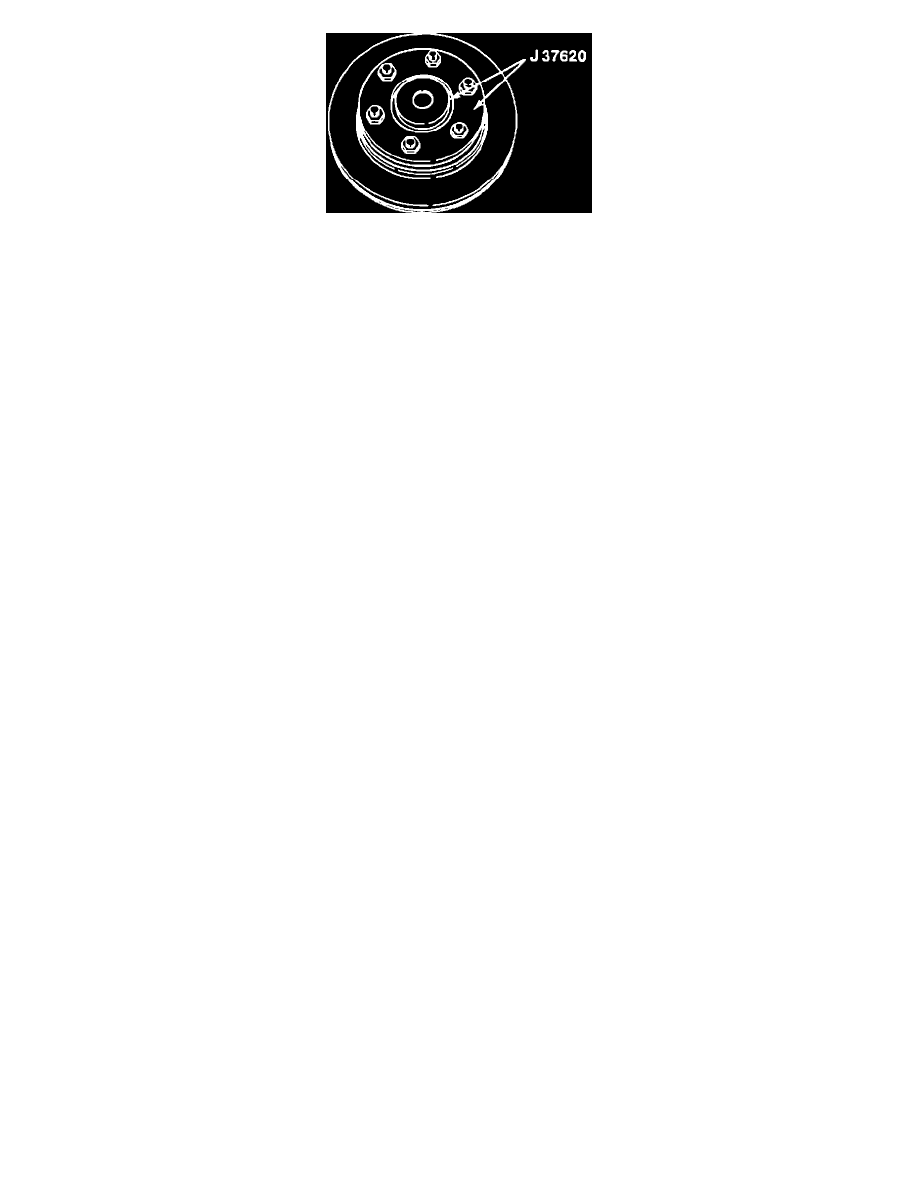C 3500 Truck 2WD V8-454 7.4L (1990)

Figure 2
Lateral runout is the movement of the rotor from side to side as it rotates on the spindle. This could also be referred to as "rotor wobble." This movement
causes the brake pad and piston to be knocked back into its' bore. This condition results in additional pedal travel and a vibration during braking.
Inspecting for Lateral Runout (see Figure 1)
1.
Install tool J37620 on K1, K2 trucks to provide clamp load to simulate "as installed" conditions.
2.
Adjust the wheel bearings to eliminate all freeplay (2 wheel drive only).
3.
Attach a dial indicator to some portion of the suspension.
^
The point of the stylus must contact the rotor face about 25 mm (1-inch) from the edge of the rotor.
4.
Turn the rotor one complete rotation.
^
The lateral runout should not exceed 0.13 mm (0.005-inch)
5.
Readjust the wheel bearings, refer to section 3C of the appropriate service manual (2 wheel drive only).
Parallelism
Parallelism is the measurement of the thickness of the rotor at four or more points around the circumference of the rotor. All measurements must be made
at the same distance in from the edge of the rotor. The rotor thickness must not vary more than 0.013 mm (0.0005- inch) from any point to point. Rotors
exceeding this specification may cause a vibration/ pedal pulsation as the brake pads open and close slightly. Parallelism checks on K1, K2 trucks should
also be done with -tool J37620 installed to simulate "as installed" conditions.
Refinishing
